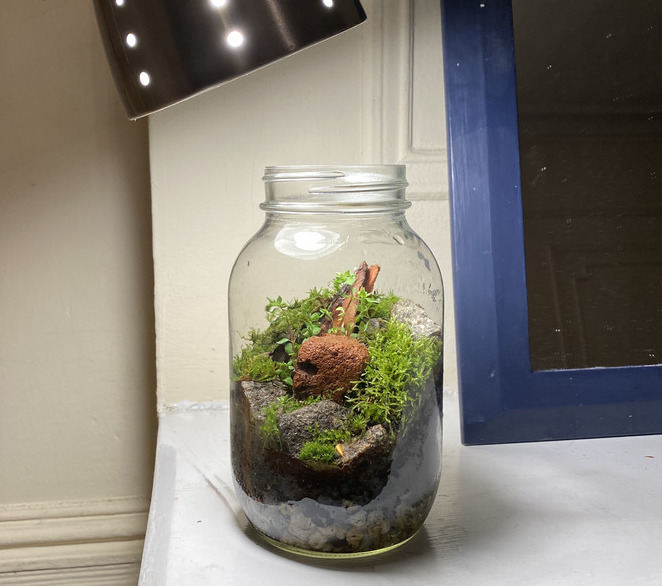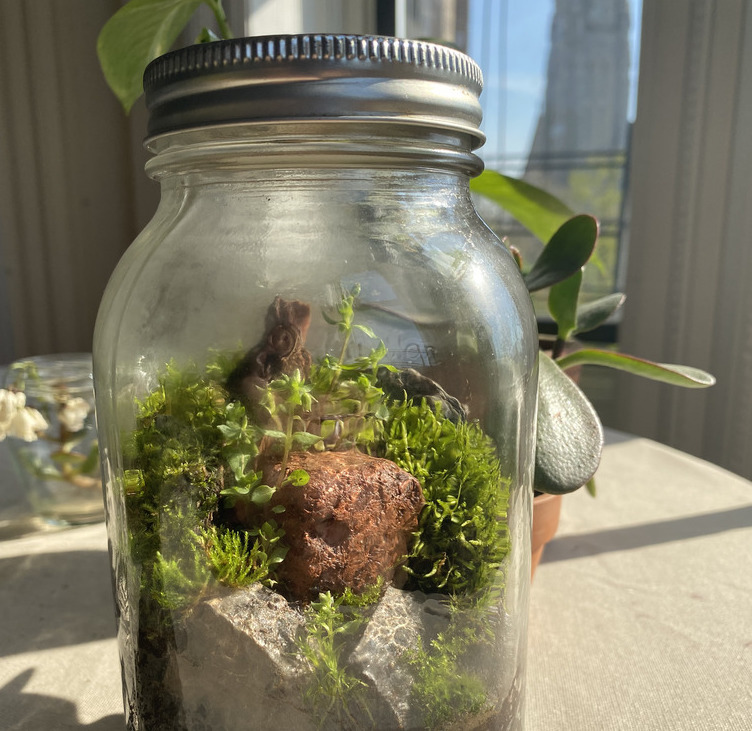The first terrarium I made was a closed mason jar terrarium containing moss, rocks, and pebbles from a local park. I walked around the park one afternoon and found a few species of moss under trees and near the streams in the woods. Pebbles and rocks were easy to find all along the many rocky paths.
I'd read that charcoal can help with the water quality inside closed terrariums, so I bought a small bag of horicultural charcoal at a local hardware store. Closed terrariums can have water cycles as the ambient light and temperature changes throughout the day. In the best water cycles, condensation shows up in the mornings and evenings but doesn't linger too long otherwise.
I also got a bag of spaghum peat moss since these peat moss layers help with water retention. Live moss likes to be in a humid environment and it's important to keep it from getting too dry.
The particular mason jar I used cost $2 at a flea market. I also saw them for a couple dollars each at a local hardware store.
Put all the above ingredients together, and voila this is how it turned out after I put everything together.

Here it is the next morning.

Unfortunately, I learned that mold can become a problem if you put certain plants and organic matter inside the closed terrariums, so this one's been going through some stress. It's still surviving so far, but I had to take a bunch of pieces of it out.
I made a couple of smaller terrariums that seem to be doing a lot better. Those contain mostly moss, and I think it's easier to sustain these mossariums without intervention.
I'll post updates here about closed terrariums as they come up.